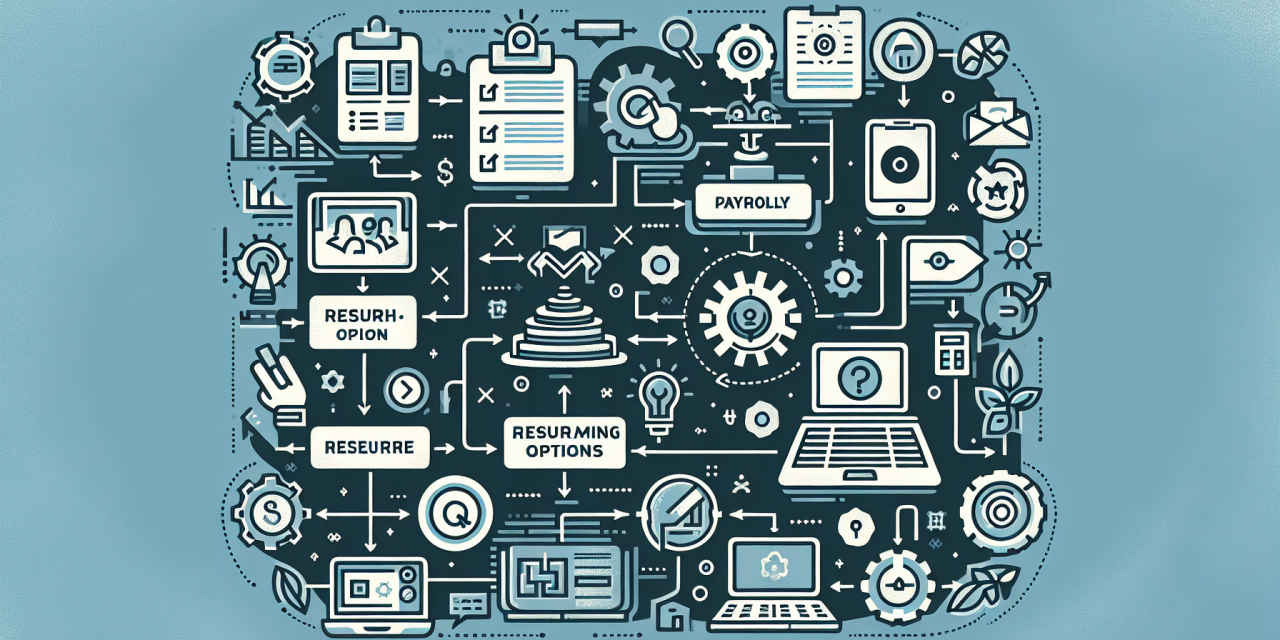Table of Contents
- Understanding Payroll Systems
- The Importance of Payroll System Selection
- Key Factors to Consider When Selecting a Payroll System
- Step-by-Step Implementation of Your Payroll System
- Overcoming Challenges in Payroll System Implementation
- FAQs
- Conclusion
Understanding Payroll Systems
In today’s fast-paced business environment, having a reliable payroll system is crucial. A payroll system does more than just calculate employee wages; it also ensures compliance with tax regulations, manages employee benefits, and tracks timekeeping. Therefore, selecting and implementing the right payroll system can significantly impact operational efficiency.
The Importance of Payroll System Selection
Many businesses overlook the selection process for payroll systems, leading to poor outcomes later on. By carefully considering which payroll system suits your needs, you can streamline operations, reduce errors, and enhance employee satisfaction. The selection process is vital because:
- Efficiency: A tailored system improves efficiency in payroll processing.
- Compliance: It helps the organization stay compliant with tax laws and labor regulations.
- Cost-Effectiveness: A well-chosen system saves money through efficient resource allocation.
Key Factors to Consider When Selecting a Payroll System
Now that we understand the importance of system selection, let’s delve into the key factors to consider.
1. Budget
First and foremost, determine your budget. Payroll systems come with different pricing models, from one-time fees to subscription-based payments. Make sure to evaluate what suits your financial plan best.
2. Compliance and Regulations
Next, ensure that any payroll system you consider complies with local, state, and federal regulations. In fact, an ideal system should automatically update to reflect changes in laws.
3. User Experience
A user-friendly interface will encourage adoption across your organization. Therefore, consider systems that allow easy navigation and accessibility for all employees.
4. Integration Capabilities
Furthermore, investigate whether the payroll system can integrate with your existing HR software and other business systems. Integration streamlines processes and prevents errors caused by manual data entry.
5. Customer Support
Last but not least, assess the quality of customer support. Reliable customer service is essential for resolving potential issues that may arise during implementation and thereafter.
Step-by-Step Implementation of Your Payroll System
Once you have selected the payroll system that aligns with your needs, it’s time to begin the implementation process. This phase can be divided into several key steps.
Step 1: Assemble Your Implementation Team
It’s crucial to bring together a team, including IT specialists, HR representatives, and payroll managers. Collaboration will ensure a smoother transition.
Step 2: Define Your Requirements
Clearly outline the functionalities required from the payroll system. By specifying these needs upfront, you can prevent scope creep and miscommunication down the line.
Step 3: Data Migration
During this stage, it’s important to transfer existing payroll data to your new system. Be meticulous to avoid loss of crucial information.
Step 4: Testing
Next up is testing the system. Run through various scenarios to ensure everything functions as expected. This phase can help identify issues before the system goes live.
Step 5: Training and Support
After testing, provide comprehensive training for all staff members who will use the system. Additionally, ensure ongoing support is available to help employees adjust.
Step 6: Go Live
Finally, launch the payroll system. Monitor its performance closely to quickly resolve any issues that may arise during the initial phase.
Overcoming Challenges in Payroll System Implementation
Even with thorough planning, challenges can occur. Here are common issues and strategies to address them:
1. Resistance to Change
Employees may feel apprehensive about a new system. To ease worries, communicate the benefits clearly and involve staff in training sessions.
2. Data Accuracy
Inaccurate data migration can lead to significant issues. Conduct a thorough audit of data before and after migration to ensure accuracy.
3. System Integration Gaps
If your payroll system doesn’t integrate well with existing systems, it could cause workflow disruptions. To combat this, prioritize systems with strong integration capabilities and consult vendors for support as needed.
4. Compliance Confusion
Keeping up with regulations can be daunting. Regular training sessions that focus on compliance can ensure that the payroll team stays informed.
For a more detailed guide on implementing payroll systems, check out Payroll System Implementation: A Step-by-Step Project Plan.
FAQs
1. How long does it take to implement a payroll system?
The duration of implementation varies based on the complexity of the system chosen. Generally, it can take anywhere from a few weeks to several months.
2. Can payroll systems manage freelance or contract employees?
Most modern payroll systems can handle various employment types, including freelancers and contract workers. It’s crucial to verify this capability before selecting a system.
3. What training is required for the payroll system?
Training often includes an overview of the system’s functionalities, data entry processes, and compliance regulations. Regular training sessions can further enhance user proficiency.
Conclusion
Implementing a payroll system can seem overwhelming at first; however, with careful planning and a structured approach, the process becomes manageable. Focus on selecting a system that meets your organization’s specific needs, and ensure thorough testing and training to ease the transition. Remember, investing time in the selection and implementation phases pays dividends in efficiency and compliance. By following this roadmap, you can confidently navigate the payroll landscape, leading to a more streamlined operation.
For additional resources on related topics, check out these articles:
- Mastering Payroll Management: Essential Best Practices for Streamlined Efficiency
- Master the Art of Negotiation: Enhancing Skills in Influence and Persuasion
- Unlocking Potential: Discover the Benefits of Neuroplasticity in Business
- Effective Strategies to Overcome Information Overload in the Workplace
- Mastering Performance Management: Unlocking Team Potential and Driving Success





